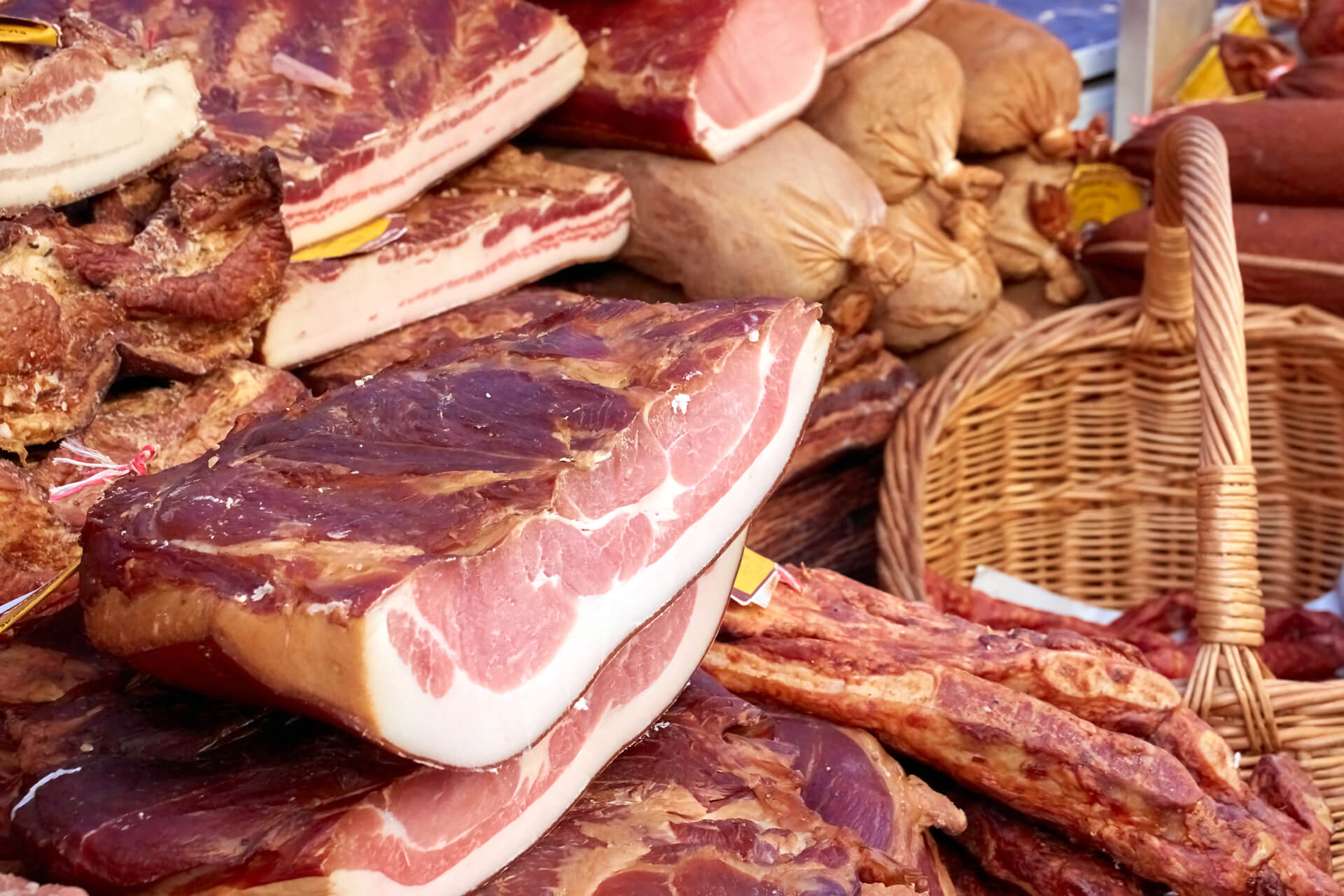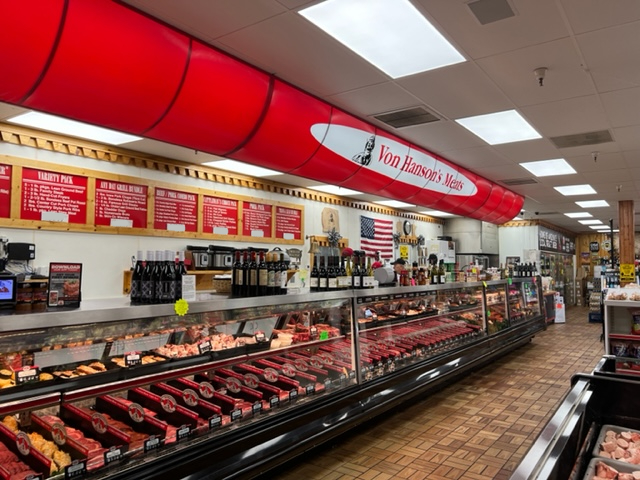Obtain the Best Bargains on Fresh Meat at Bagley Farms Meat Market Edwardsville IL
Obtain the Best Bargains on Fresh Meat at Bagley Farms Meat Market Edwardsville IL
Blog Article
Reveal the Art of the Butcher's Cut in a Modern Meat Market
In the ever-evolving landscape of modern-day meat markets, the butcher's cut has transcended its conventional roots, merging olden craftsmanship with modern methods. bagley farms meat market edwardsville il. Today's butchers are not simply processors of meat; they are well-informed artisans that stress sustainability and honest sourcing. Their expertise in choose and preparing cuts customized to certain cooking demands supplies an exceptional dining experience. Yet, what absolutely establishes the modern-day butcher apart is their capability to create a deeper link in between consumers and the beginnings of their meat. Exactly how do these masters balance tradition with advancement, and what implications does this have for the future of meat intake?
Advancement of Butchery Techniques

The mid-20th century saw butchery methods additionally improved by clinical understandings into muscular tissue biology and meat aging, enhancing both inflammation and taste. Technologies like vacuum packaging and refrigeration prolonged item shelf-life, permitting butchers to branch out offerings and enhance top quality control. This period also marked the surge of customized devices, such as band saws and meat slicers, which increased accuracy and efficiency in meat processing.
The 21st century has introduced electronic technology right into the butchery realm. Electronic systems now assist in tracking pet provenance and maximizing cuts to satisfy particular client choices. Additionally, a resurgence in artisanal butchery has emerged, mixing typical skills with modern-day expertise to cater to consumers looking for moral and lasting meat choices. This evolution underscores a vibrant interaction in between tradition and technology, meeting modern needs while protecting the craft's heritage.

Comprehending Meat Cuts

Recognizing the complexities of meat cuts is vital for both butchers and customers looking for quality and value. For butchers, exact cuts reflect ability and regard for the craft, ensuring minimal waste and optimal yield.
The key classifications of meat cuts include primal, sub-primal, and retail cuts. Primitive cuts, such as the loin, rib, and chuck, are the big sections initially divided from the carcass. Butchers then damage these down better into sub-primal cuts, before ultimately producing retail cuts readily available to consumers, like ribeye or tenderloin. Each phase requires careful attention to physiological framework and muscle composition.
Comprehending muscle composition is crucial; muscle mass used a lot more often by the pet have a tendency to be harder and are best suited for sluggish food preparation methods, while less-used muscle mass, like those found in the loin, are a lot more tender and ideal for cooking or roasting. Familiarity with these distinctions equips customers to make enlightened options, boosting their culinary ventures.
Picking Quality Meat
Picking the appropriate meat involves more than just choosing an aesthetically attractive item from the display. The art of choosing quality meat calls for a critical eye and expertise of details characteristics that represent freshness and quality.
Second of all, consider the marbling, which refers to the white flecks of fat within the muscle mass. Proper marbling is a key sign of tenderness and taste, as it thaws throughout cooking, boosting the meat's juiciness. Keep in mind, greater marbling commonly correlates with exceptional high quality cuts, such as USDA Prime.
Appearance is another crucial factor; meat needs to really feel solid to the touch, not slimy or overly soft. Furthermore, be mindful of the scent. Fresh meat must have a tidy, neutral odor, devoid of any kind of sour or repulsive smells.
Pairing Cuts With Food Preparation Techniques
Successfully matching cuts of meat with the appropriate cooking methods is vital for check out this site achieving ideal flavor and structure. Different cuts differ in tenderness, marbling, and connective cells content, each needing specific methods to unlock their potential. As an example, tender cuts like filet mignon and ribeye, with their fundamental marbling, benefit from high-heat, quick-cooking techniques such as grilling or pan-searing. These approaches improve the meat's all-natural flavors and ensure a juicy finish.
Alternatively, harder cuts like brisket and chuck roast are rich in collagen, which damages down into jelly when cooked gradually. These cuts are perfect for braising or slow-moving roasting, allowing the meat to tenderize over time and create deep, intricate flavors. In a similar way, cuts such as brief ribs and pork shoulder prosper with slow-cooking methods, where expanded cooking times transform their robust structures into succulent dishes.
Lamb shanks and oxtail, which require extended visit our website food preparation to soften, are ideal prospects for cooking or slow simmering. These methods coax out rich, passionate flavors while preserving wetness. By recognizing the special characteristics of each cut, cooks and home chefs alike can raise their culinary productions, making certain each meal is both satisfying and memorable.
The Butcher's Role Today
Navigating the progressing landscape of the modern meat market, the butcher's function today expands beyond simple preparation of cuts. Contemporary butchers are cooking craftsmens, instructors, and supporters for lasting techniques.
In enhancement to crafting accurate cuts, butchers currently engage straight with customers, offering cooking recommendations and tailoring choices to fit private demands and preferences. Their know-how in meat aging, marbling, and taste accounts empowers consumers to make educated choices, improving their culinary experiences. This individualized solution exemplifies the butcher's evolving duty as a relied on expert in the kitchen area.
Additionally, butchers are pivotal in lessening waste, making use of whole animals to develop diverse items such as sausages and supplies - bagley farms meat market edwardsville il. This comprehensive strategy not just values the animal yet likewise aligns with contemporary sustainability objectives. By doing this, the contemporary butcher embodies both custom and innovation, adjusting to an ever-changing market while preserving the creativity and stability of their craft

Conclusion
Proficiency in understanding have a peek here varied meat cuts and high quality signs equips butchers to supply informed suggestions, straightening specific cuts with optimal cooking approaches. By recognizing historical practices while embracing modern demands, the butcher's function stays important in today's advanced meat market.
Report this page